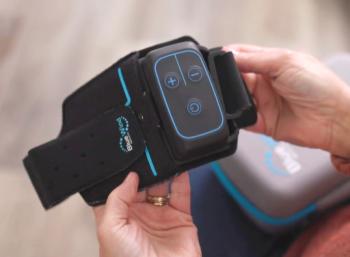
COVID-19 fallout: How will other needed care be provided during the pandemic?
There is no easy answer to this dilemma.
As our healthcare system and others around the world gear up to deal with the largest public health crisis of the past 100 years, one additional important question to ask is how will all the other needed healthcare delivery occur over the next few months and, if the pandemic ends up going on for longer, the next 12-18 months?
This needed healthcare delivery includes surgeries that although elective may still be important in helping an individual function or manage other healthcare conditions they have; important primary care delivery like chronic disease management that patients must get to avoid having their chronic conditions worsen or cause other health-related illnesses; and ongoing preventive care that may help blunt both the possibility of getting Covid-19 or mitigate its severity once contracted. Given the current system’s inability, at least right now, to properly take on the pandemic, it is fair to wonder how much other important healthcare will be neglected in the coming year, and what additional negative impact this will have on the health status of many Americans and citizens of other countries.
Already, my family and I have received e-mails from our providers telling us that their offices are closing to all but emergency care, for time periods that may last awhile. We have been told by one or two that we may be able to conduct telehealth visits with them for certain issues. It is difficult to understand how telehealth can used quickly or in a high-quality manner for services like orthopedics, cardiology, or dermatology; or any care that requires lab work, imaging, procedures, or an actual physical examination. Regarding virtual care, the reality is we are simply nowhere close yet to having the technology or expertise to do it right, regardless of payment being available. In addition, some healthcare professional still has to be involved in telehealth provision and in a system with no capacity, it is hard to imagine it making much short-term difference.
There is no doubt that our health systems must gear up first and foremost for the crisis at hand. The need to keep people at home and away from public spaces is a short-term imperative to blunting Covid-19’s spread. But over the longer-term, beyond these first couple of months, if we make patients significantly delay or cancel important care they require to stay healthy and function independently, or provide it in a low-quality way, we risk making the effects of this pandemic much worse. Blood sugars and high blood pressure that cannot be monitored or controlled properly; surgical procedures that would enhance patients’ ability to care for themselves or others; arising mental health issues that will impact people’s ability to think and behave proactively with respect to staying healthy, and to work and earn a paycheck-left neglected these realities will amplify how Covid-19 affects local populations and leave many more Americans in worse healthcare shape once this pandemic is over.
There is no easy answer to this dilemma. Across the globe we have spent years underinvesting in our primary care systems almost everywhere-Italy, the United Kingdom, and the United States, to name a few. Here in the U.S. especially, we have encouraged an expensive, fragmented, and mostly hospital-based system of specialty care that now makes it difficult, because hospitals are ground zero in caring for the sickest Covid-19 patients, to get other needed forms of care out into local communities and to the places where many live and work. Many hospitals have to almost shut down and become purely focused on Covid-19 patients because of the highly communicable aspects of the illness, but also their lack of capacity to do anything else simultaneously as they deal with patient demand from the illness.
How soon they are able to go back to business as usual once the current crisis ends is an open question. It may not be easy for them.
Even when we have enough Covid-19 tests available, we will have difficulty finding ways to get such testing out to individual patients, in part because there are many communities with few local care providers or ones who have the time to test populations, and as mentioned many offices are closing already for extended periods of time.
What is left of the primary care system in the United States, as an example, will need to step up and lead the way in trying to handle a good chunk of this other needed care delivery, once the current crisis eases. Bringing physicians and nurses out of retirement in local communities quickly to attach themselves to primary care offices and urgent care centers is one needed step. Moving whatever low-level primary care we can to the virtual space, whether done through phone or computer, is a second step. Making some primary and urgent care offices in local communities open 24 hours a day, with certain hours allocated for specific types of care delivery, and staffed accordingly, is a third step. Redesigning work flows in these offices to care in more efficient ways to create a faster-moving but attentive assembly line, segmented by the type of care, is a fourth step. Providing added financial support to these offices, in the form of enhanced reimbursement, underlies it all. But even these steps may require many months to be implemented. Still, when the time is right, we have to try.
The Covid-19 pandemic is like nothing we have seen in our lifetimes. We must do everything possible to lessen its potential destructiveness. Part of that is also making sure we do not forget about the other important care patients require to stay healthy and function. If we do, we risk emerging from this crisis with a population and workforce much less able to contribute in making our societies and economy strong again.
Timothy Hoff, PhD, is Professor of Management, Healthcare Systems, and Health Policy at Northeastern University in Boston, MA, a Visiting Associate Fellow at the University of Oxford, and author of the book, Next in Line: Lowered Care Expectations in the Age of Retail- and Value-Based Health.
Newsletter
Stay informed and empowered with Medical Economics enewsletter, delivering expert insights, financial strategies, practice management tips and technology trends — tailored for today’s physicians.














